![Window[pane] to the Past: Glass from East of the Theater at Corinth](/uploads/news-events-images/_detail/Cor19.1_InterviewBanner_.jpg)
Window[pane] to the Past: Glass from East of the Theater at Corinth
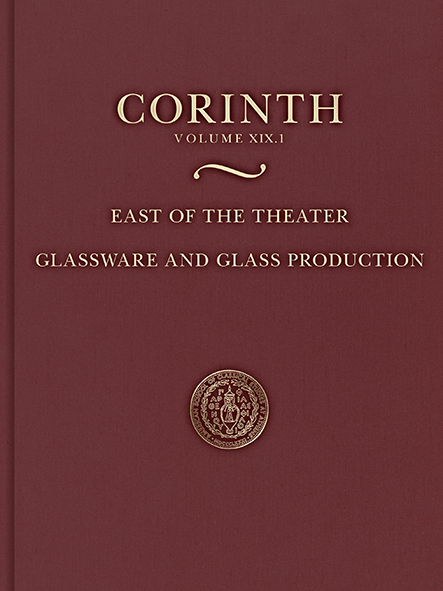 The latest publication in the ASCSA’s Corinth series is Anastassios C. Antonaras’s East of the Theater: Glassware and Glass Production (Corinth XIX.1). The inaugural final report from the excavations east of the Theater, conducted by the School in the 1980s, this volume represents the first attempt at Corinth to analyze the entire corpus of glass found in a single area. Antonaras catalogues over 450 examples of glassworking remains, vessel glass, and non-vessel glass found in this residential neighborhood, dating from the Early Roman to Early Byzantine period, and all illustrated in full color. A curator at the Museum of Byzantine Culture in Thessaloniki and president of the International Association for the History of Glass, Antonaras is currently in residence at the J. Paul Getty Museum in California, where he is preparing to publish the museum's collection of ancient glass. He recently took time away from this work to discuss the development of his Corinth volume and the challenges and opportunities the project presented.
The latest publication in the ASCSA’s Corinth series is Anastassios C. Antonaras’s East of the Theater: Glassware and Glass Production (Corinth XIX.1). The inaugural final report from the excavations east of the Theater, conducted by the School in the 1980s, this volume represents the first attempt at Corinth to analyze the entire corpus of glass found in a single area. Antonaras catalogues over 450 examples of glassworking remains, vessel glass, and non-vessel glass found in this residential neighborhood, dating from the Early Roman to Early Byzantine period, and all illustrated in full color. A curator at the Museum of Byzantine Culture in Thessaloniki and president of the International Association for the History of Glass, Antonaras is currently in residence at the J. Paul Getty Museum in California, where he is preparing to publish the museum's collection of ancient glass. He recently took time away from this work to discuss the development of his Corinth volume and the challenges and opportunities the project presented.
Anastassios C. Antonaras at work in the J. Paul Getty Museum
Now a recognized expert in ancient glass studies, Antonaras recalls the twist of fate that led his studies toward this specialized field: “In 1994, I was assigned to work on minor objects and glass finds from salvage excavations in central Macedonia and Thessaloniki for the local Ephorate of Antiquities.” He became especially interested in the glass very early on, attracted by “the smooth curves of the blown vessels, but also by the way light played with the colorful translucent and iridescent finds.” His involvement with Corinth began much later, first when he requested permission to study the medieval glass finds from the site. But since he was also an expert on earlier Roman glassware typology, the focus of his Ph.D. dissertation, he was soon invited by Charles K. Williams II to work on the glass material from the excavations east of the Theater, which Williams had directed.

Plan of the excavations east of the Theater (C. K. Williams II, D. R. Scahill)
One of the most significant challenges Antonaras faced once he began studying the glass from east of the Theater in 2008 was gaining an understanding of the site through the decades-old written records of the excavation. He returned to Corinth almost annually for several years, but the long intervals between each study season added to the challenge. He identifies the support he received from other members of the Corinth team as pivotal in helping him come to understand the stratigraphy and history of the site, especially from Kathleen W. Slane, who is working on the pottery from east of the Theater, as well as from Williams and Assistant Director Emerita Nancy Bookidis. Another challenge was the state of preservation of the glass finds: as can be expected in an area of habitation in use for several centuries, the vast majority of the objects consist of only one very small fragment, which often made identifying them quite difficult. In evaluating these tiny fragments, Antonaras relied on his immense experience, including the many hours he has spent with contemporary glassblowers in an effort to “understand the nature of molten glass and apply that knowledge to understanding different tooling marks and other peculiarities visible on ancient finds.”
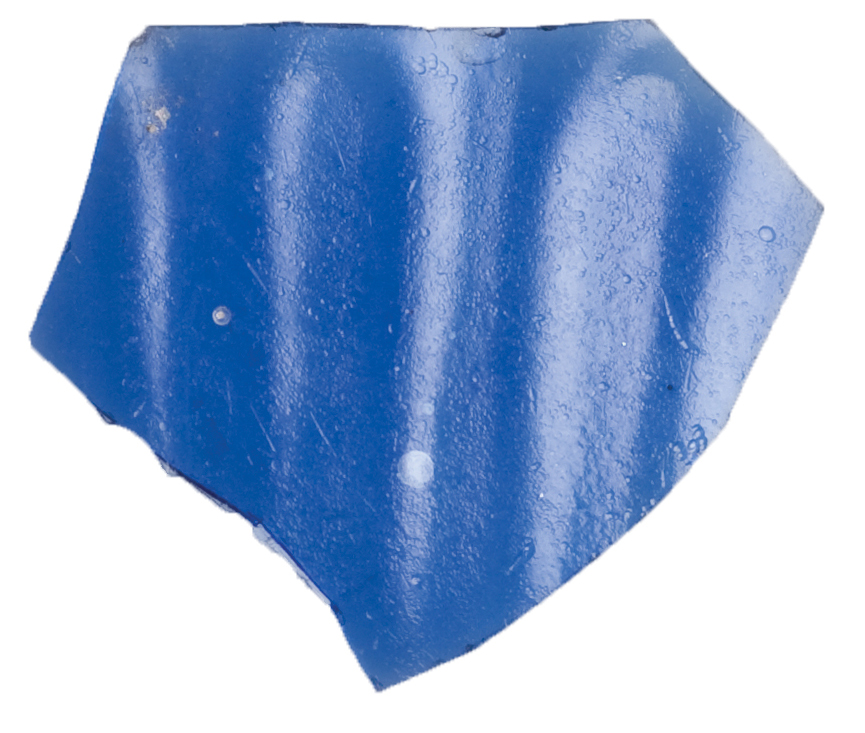
Very small body fragment of an Early Roman bowl, typical of the fragmentary state of most of the glass finds excavated east of the Theater (H. 1.5 cm) (Photo P. Dellatolas)
Still, these challenging aspects of the project also made the collection an exciting and worthwhile one for study. “The significance of the Corinthian finds,” Antonaras explains, “lies in the fact that they are the result of systematic excavations and come from dated archaeological contexts, which range from the Late Hellenistic and Roman Imperial periods through the Middle Byzantine era.” In contrast, museum collections—which Antonaras also has extensive experience studying and publishing—usually consist of well-preserved objects isolated from their original context and history, thus “deprived of a major part of their historical value.” Similarly, finds from older salvage excavations are often accompanied by only very summary archaeological records, with their contexts not always identifiable. But a well-documented corpus like that from east of the Theater “makes it possible to detect continuities and discontinuities in patterns of use, techniques, and forms of glass from one chronological period to the next,” Antonaras relates.
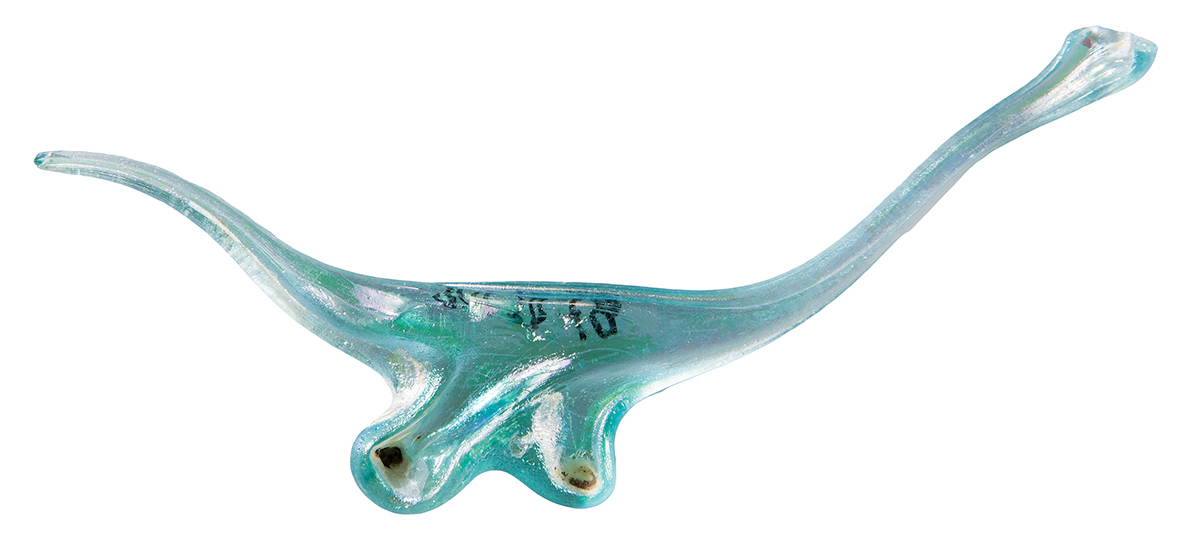
A glass thread from the 2nd century A.D., one of the hundreds of fragments of glassworking remains discovered east of the Theater (L. 11.0 cm) (Photo P. Dellatolas)
The remains of glassworking activities, for example, provide information about the production methods and products of nearby glass workshops. One of the most surprising results of this study, Antonaras notes, was the fact that glassworking remains were present in several areas of the excavation, and dated to every century from the 1st to the 5th century A.D., indicating the almost continuous operation of workshops in the vicinity. The glass vessels excavated in the area comprise both imports and local products, which can elucidate aspects of the life of Corinthians of all classes in this important commercial hub. Other glass objects include examples of the architectural uses of glass indicative of the costly character of the buildings in the area, as well as implements and jewelry that reflect the lifestyles of their inhabitants.
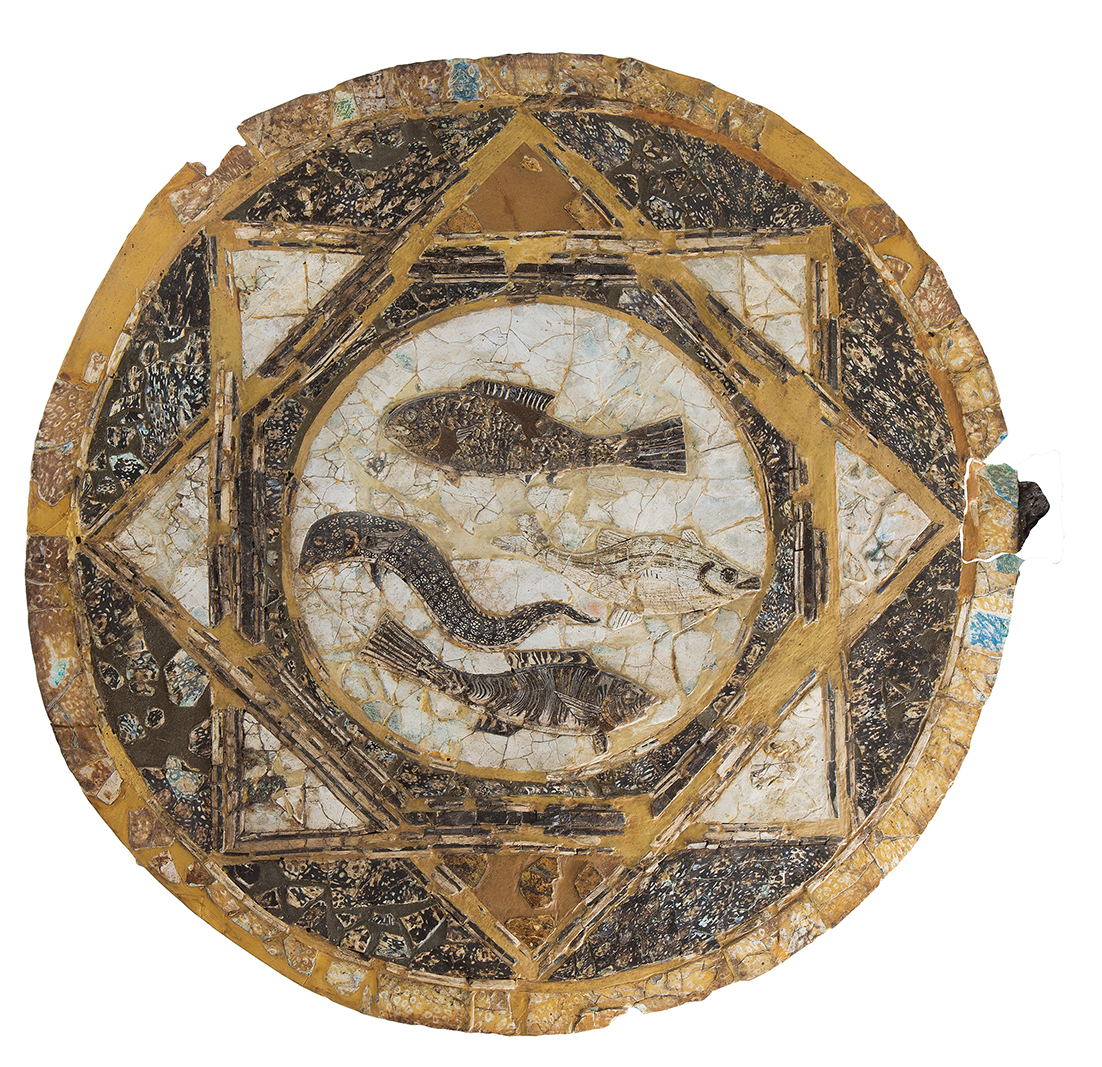
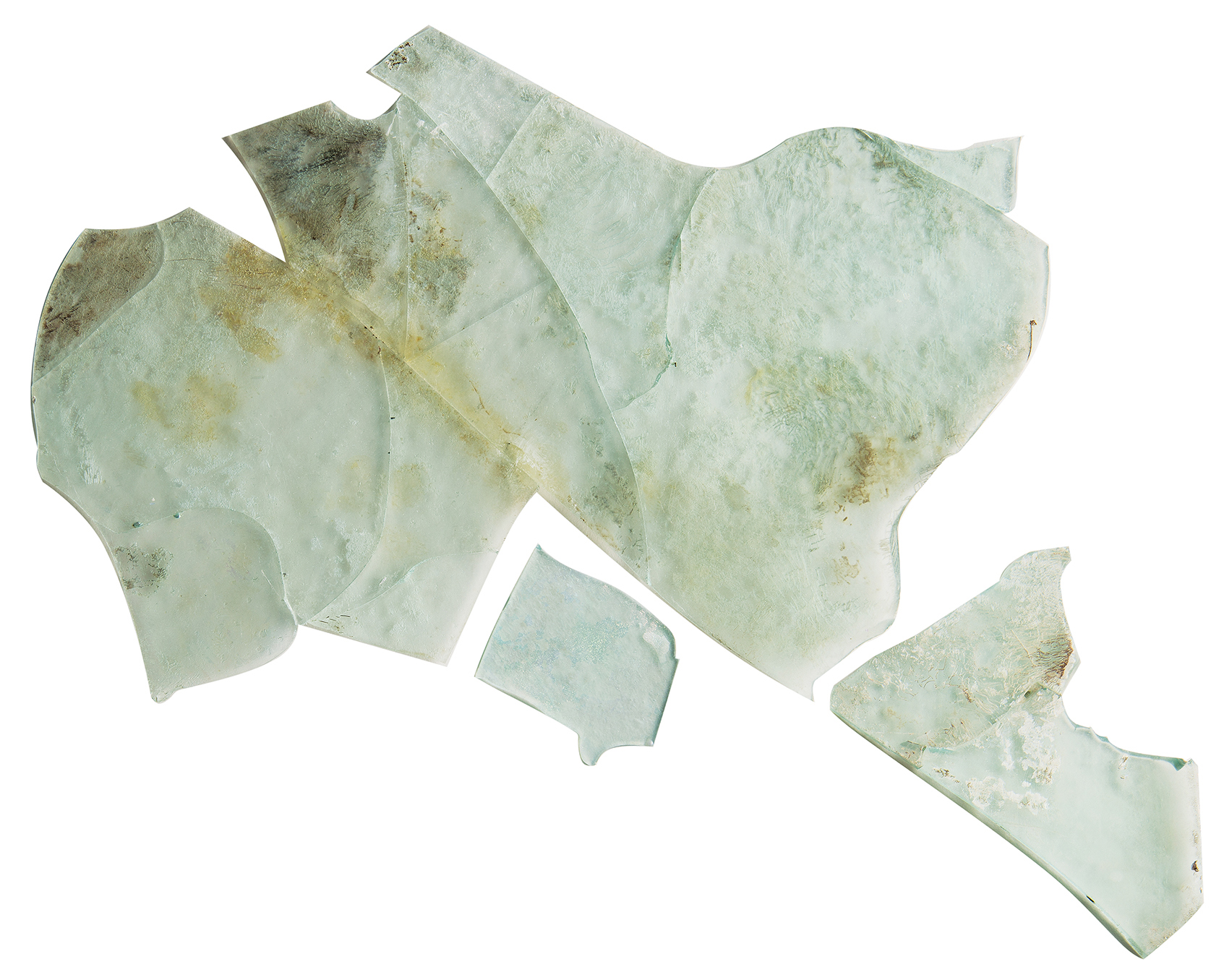
Opus sectile panel depicting fish from the 3rd century A.D. (Diam. 57.1 cm) (left), and a fragmentary windowpane from the late 3rd to 5th century A.D. (p.L. 25.0 cm, p.W 20.0 cm) (right) (Photos P. Dellatolas)
Within the larger corpus, several groups of finds stand out for various reasons, as Antonaras details in Chapter 2 of the volume. In some cases, the consistency of the assemblage is remarkable, as with a group of 109 vessels from a single context of the late 2nd century A.D., consisting mostly of Italian or Italian-inspired tableware. In other cases, finds stand out for the intrinsic interest of the glass, like the 3rd-century A.D. opus sectile panels, which are evidence of the type of luxurious decoration that once existed in the domestic structures in this area. Other contexts, including a well and a manhole, provide examples of unusually well-preserved vessels.

Nearly complete double-handled flask from well 1982-1, mid-5th century A.D. (H. 26.0 cm) (Photos P. Dellatolas)
But the finds that most appeal to Antonaras himself are the non-vessel glass objects, “because they somehow make me feel closer to their owners.” He reflects:
They allow me to “see” parts of their lives and their everyday activities: the public spaces, where the glass exagia were used to verify the correctness of a gold coin’s weight and where board games were played with glass counters; the houses with glazed windows and sumptuous opera sectilia decorations; and even the domestic areas associated with women, where stirring rods were probably used and bracelets were kept.
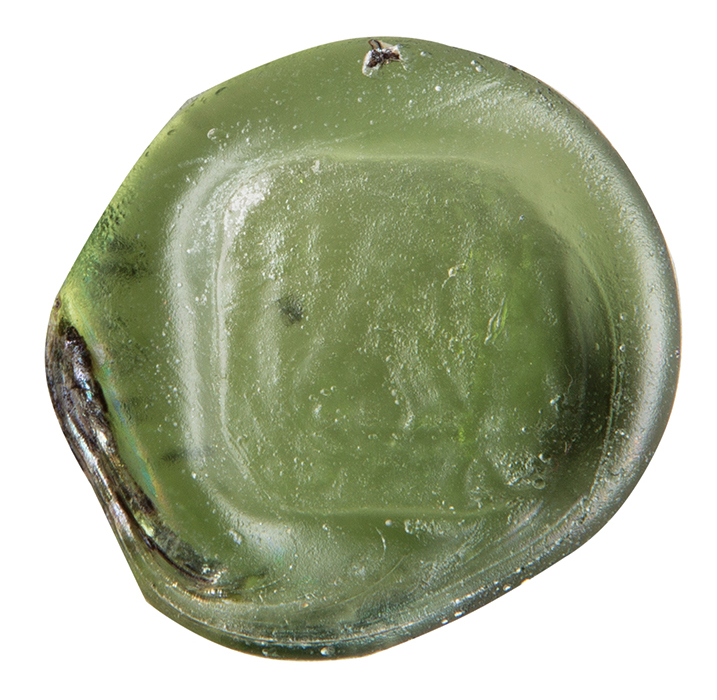
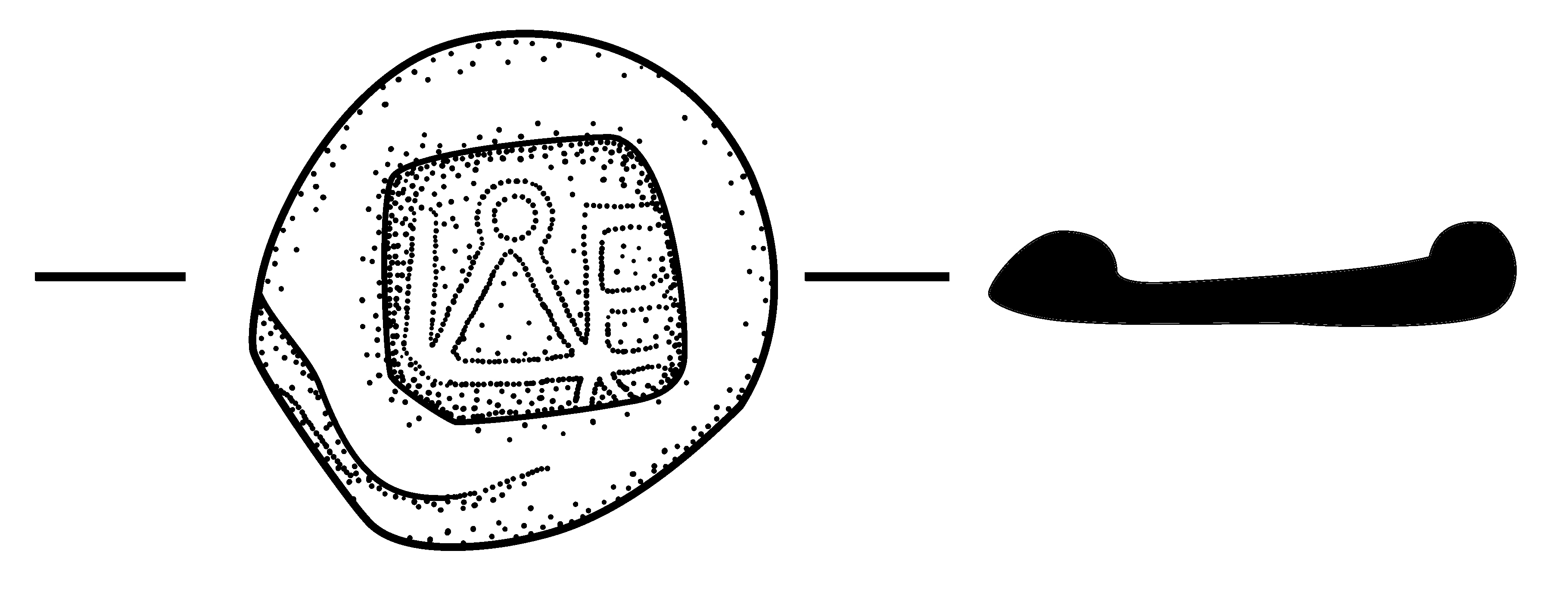
Exagium (coin weight) with monogram, late 5th century A.D. (Diam. 2.5 cm) (Photo P. Dellatolas; drawing C. Kolb)
By offering such tantalizing glimpses into the lives of everyday Corinthians, the glass material from east of the Theater presents for the first time an overall picture of the classes, forms, and uses of glass in the Roman Imperial and Early Byzantine periods in a “middle-class” residential and business area of an important Mediterranean city. This groundbreaking volume thus advances glass studies both within Greece and throughout the Mediterranean.
As the first systematic publication of any class of finds from the area east of the Theater, this volume was a team effort, as Antonaras is eager to acknowledge, “relying on the vast amount of work undertaken on the study of the pottery and the numismatic finds, and incorporating the excavator’s latest understanding of the buildings and their history.” He recalls his time at Corinth fondly and praises the organization and helpfulness of the entire Corinth Excavations team for making his visits productive and enjoyable. Happily for us, Antonaras’s work at Corinth is not finished yet, as he is now studying the glass finds from the Sanctuary of Demeter and Kore and from the Gymnasium Area, in addition to his work on the Getty collection. We look forward to these studies eventually joining the many previous publications on the Sanctuary (Corinth XVIII) and the first final report from the Gymnasium Area, Mary C. Sturgeon’s forthcoming volume on the sculpture (Corinth XXIII.1).
East of the Theater: Glassware and Glass Production (Corinth XIX.1) can be ordered from our distribution partners: Casemate Academic (in North America) or Oxbow Books (outside of North America).